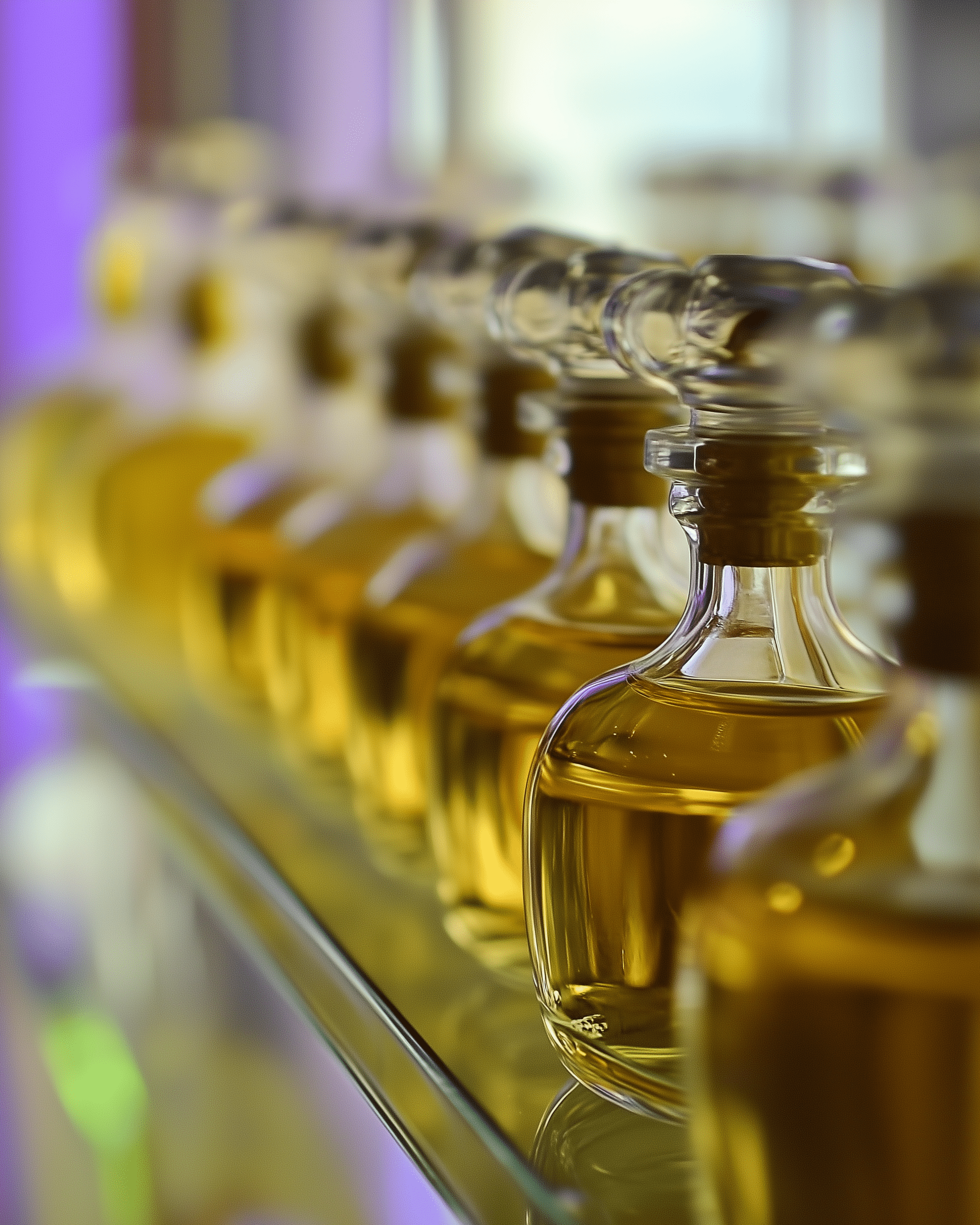Article: What is perfume and how is it made?

What is perfume and how is it made?
“Perfume is the art of expressing yourself without saying a word.”
These words reflect why fragrances play such a central role in our lives. But what exactly is perfume? How is it created? And what is the difference between eau de parfum and other forms of fragrance?
In this article, we take you on a journey through the world of fragrances and the art of creating them.
THE ART & SCIENCE OF PERFUME MAKING
The production of a perfume is a symbiosis of art and science. A unique fragrance is not created by chance - it is the result of a creative process that combines craftsmanship, chemistry and inspiration.
STEP BY STEP TO FRAGRANCE CREATION
- Inspiration & Concept: Every fragrance begins with an idea. A certain feeling, a memory or even a landscape can serve as the basis. In this phase, a fragrance vision is developed, which is often coordinated with a perfumer. At L'Art Vévien, this vision revolves entirely around the combination of art and perfume.
- Selection of Notes: Based on the concept, the perfumer selects the appropriate notes. These are natural and synthetic raw materials to achieve the desired depth and longevity. These notes are typically categorized in families to create a sense of orientation for customers and retail stores.
- Formulation & Tests: The first blends are created. This involves experimenting with concentration in order to find the perfect blend.
- Maturation & Maceration: The perfume is stored for a few weeks or months so that the molecules combine optimally This step influences the quality and longevity of the fragrance.
- Filtration & Bottling: After maturing, the perfume is filtered to remove residues. It is then bottled before being sold in perfumeries.
NATURAL VS. SYNTHETIC FRAGRANCES
- Natural fragrances come from plants, woods and sometimes even animal sources. They are obtained by distillation, extraction or pressing. Their advantage lies in their complex, often warm depth. The disadvantage? They are expensive, difficult to stabilize and often not sustainable.
- Synthetic fragrances, on the other hand, are developed in the laboratory. They make it possible to recreate rare or extinct fragrances and offer consistent quality. Modern perfumes often rely on a combination of both variants.
COMPOSITION & CLASSIFICATION OF PERFUME
THE DIFFERENT FRAGRANCE CONCENTRATIONS
The difference between perfume and other fragrance variants lies in the concentration of the fragrances. Here is an overview:
- Parfum (Extrait de Parfum): Contains 20-30% fragrance concentration and lasts up to 8 hours.
- Eau de Parfum (EdP): Contains 10-20% fragrance concentration and lasts 4-6 hours.
- Eau de Toilette (EdT): Enthält 3-9 % Duftkonzentration und hält 3-5 Stunden.
- Eau de Cologne (EdC): Enthält 1-3 % Duftkonzentration und hält etwa 2 Stunden.
L'Art Vévien relies exclusively on an extrait de parfum concentration for a long-lasting effect and optimum quality. If you want to know more about long-lasting fragrances, have a look at this post.
THE FRAGRANCE PYRAMID: HOW A FRAGRANCE UNFOLDS
Fragrances develop over time and consist of different phases:
- Top notes: The first few minutes after application - light, fresh notes such as citrus or mint.
- Heart notes: The true essence of the fragrance, which unfolds after 15-30 minutes. Mostly floral or spicy.
- Base notes: Long-lasting, deeper accords such as woods, musk or vanilla that linger for hours.
HISTORY & TECHNIQUES OF PERFUME MAKING
THE HISTORY OF PERFUME PRODUCTION
Even the ancient Egyptians used fragrances for rituals and body care. Later, the Romans and Arabs further developed distillation techniques. In the 17th century, Grasse, France, became the global center of perfume production - a status it still holds today. All L'Art Vévien perfumes are developed and produced in the perfume capital of Grasse - further proof of our commitment to quality.
TRADITIONAL EXTRACTION METHODS
- Enfleurage: Outdated but fascinating technique in which flowers release their fragrances in fat.
- Steam distillation: Used for woods and herbs to extract essential oils.
- Cold pressing: Mainly for citrus fruits.
- Solvent extraction: Modern method for efficiently extracting sensitive fragrances.
MODERN INNOVATIONS IN THE PERFUME INDUSTRY
Today, chemical research makes it possible to produce fragrances that hardly exist in nature, if at all. This not only offers creative freedom, but also helps to protect endangered resources. In addition, more and more manufacturers are focusing on sustainable production and recyclable packaging.
CONCLUSION
The world of fragrances is a fascinating blend of tradition, innovation and craftsmanship. Whether natural or synthetic, in luxury perfumeries or as part of our daily lives, a good fragrance can evoke memories, trigger emotions and boost our self-confidence.
Which fragrances appeal to you?


